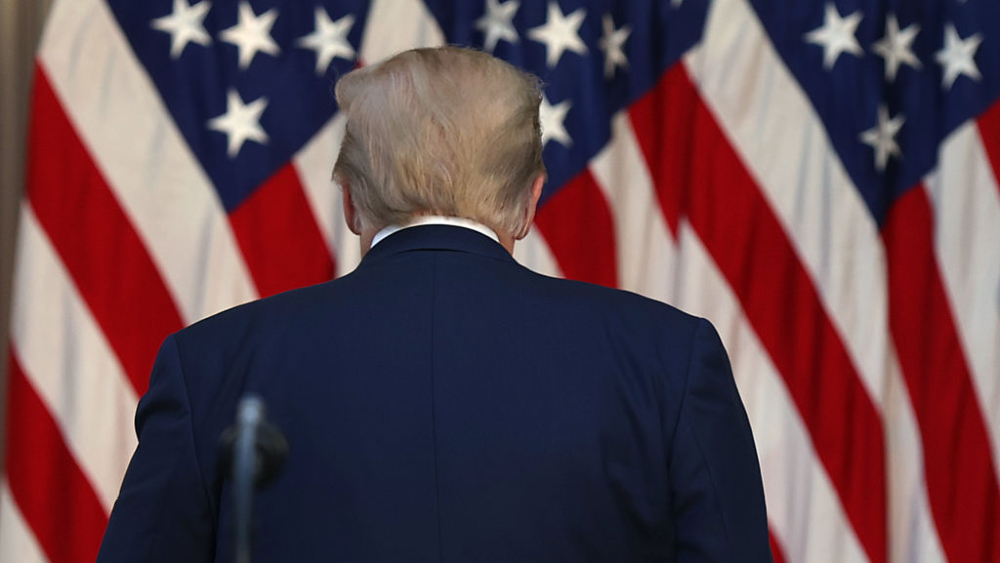If you’re interested in sharing your opinion on any cultural, political or personal topic, create an account here and check out our how-to post to learn more.
____
On June 1, 2020, the 45th President of the United States addressed a nation ignited by outrage.
George Floyd, a 46-year-old Black man suspected of passing a counterfeit $20 bill, died in Minneapolis, Minnesota, after Derek Chauvin, a white police officer, pressed his knee to Floyd's neck for almost nine minutes. Several bystanders took videos of the incident. The viral nature of the widely circulated video could have rivaled the contagious nature of the COVID-19 virus that concurrently ravaged the nation.
The subsequent protests throughout American cities showcased passionate Americans searching for answers. George Floyd, the lastest of a long list of unarmed, nonresistant American Black citizens killed. One of many names that function as reminders that the wound of America's first sin has not healed. It remains an open sore that has begun to fester.
Officer Derek Chauvin worked for the Minneapolis Police Department for more than 18 years. Before he knelt on Floyd's neck, Chauvin was the subject of 18 previous grievances filed against him with the Minneapolis Police Department's Internal Affairs.
According to CNN, only two of the 18 complaints were "closed with discipline." In a 2006 instance, A grand jury decided not to charge Chauvin for his involvement in a fatal shooting. The city of Minneapolis failed Floyd long before his death. There were 18 prior opportunities, where a change should have happened, where some action could have been taken, which could have prevented his 19th infraction.
June 1's address allowed Trump to address the nation's history of police brutality and discuss how even when arrested peacefully, people of color are punished more intensely than their white counterparts for identical crimes. Trump could have apologized for his presidency's early years, where he labeled kneeling NFL players “sons of bitches” for protesting. He could’ve simultaneously addressed the irony of the players who kneeled to draw attention to police brutality, predating an officer utilizing the same pose to squeeze the life out of a former two-sport athlete at Jack Yates High School.
Unfortunately, none of these things occurred during the president's address — not one. Trump, who barely mentioned Floyd or the tenuous relationship between police and Black citizens, used his public appearance to flex his access to even more force. When one could believe a presidency could not reach a new low, Trump managed to slide under the proverbial limbo stick without falling or dislodging the bar.As tear gas and rubber bullets wafted through the air and into the eyes and bodies of peaceful protestors, Trump declared them domestic terrorists. The president then announced that if state or city leaders refuse "to take the actions necessary to defend the life and property of their residents," he will invoke the Insurrection Act, a law from 1807 which would permit a president to deploy the U.S. military to suppress civil disorder.
He culminated his words by using force to clear a path so he could appear in front of a church that he does not attend, with a bible that he does not own, to leverage the equity of a word he does not practice.
Trump's inability to address the issues of race or abuse of power is not surprising. The president used his past powers to exclude creditworthy Blacks from renting his properties. He leveraged financial resources to push for the death penalty of the Central Park Five. He also began his political exploits by perpetuating conspiracies on the birth of the first Black president.
The act of clearing the path of land occupied by tax-paying Americans for the external appearance of piety reeked of entitlement and radiated callousness. Disturbing still was the layers of meaning behind his word choice. Forex, the description of American protesters as a terrorist, comes after his previous descriptions of white supremacists as "fine people." His use of terms such as the “silent majority,” and “law and order,'' was coded terms popularized by the Nixon administration's Southern Strategy. An electoral strategy that was used to increase political support by petitioning resentment against Blacks and the civil rights movement.
Despite some Americans' insistence, our nation is far from color blind, and our commander-in-chief continues to divide and prod at unhealed wounds. The recent deaths of Michael Brown, Eric Garner, Walter Scott, Samuel Du Bose, Sandra Bland, Ahmaud Aubrey and George Floyd have served as examples of how the wounds of race continue to rot and to spill over.
The bacteria of racism has grown long enough; it's time to discuss a vaccine.
